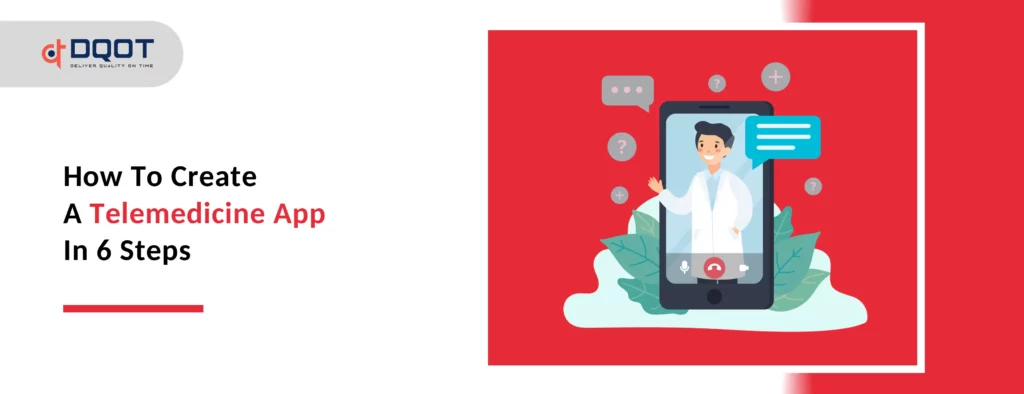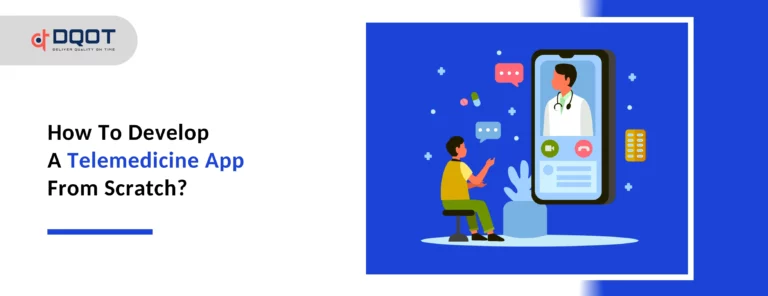Have you ever been in a situation where you are unwell but do not want to step out of the house to visit a doctor’s clinic. Or maybe the clinic is so far from your place, do not worry telemedicine apps have got you covered with that. Telemedicine applications help people get medical care using technology, without visiting their clinic. These apps provide features like live video calling with real doctors. Just like an in-person visit, but from the comfort of your own home! Through advanced technologies, doctors even give E-Prescription based on your problems. Dqot Solutions specializes in developing top-quality telemedicine apps. Don’t let medical health issues interrupt your daily life. A well-designed telemedicine app keeps medical help just a tap away.
Table of Contents
Top Reasons To Create A Telemedicine App in 2024
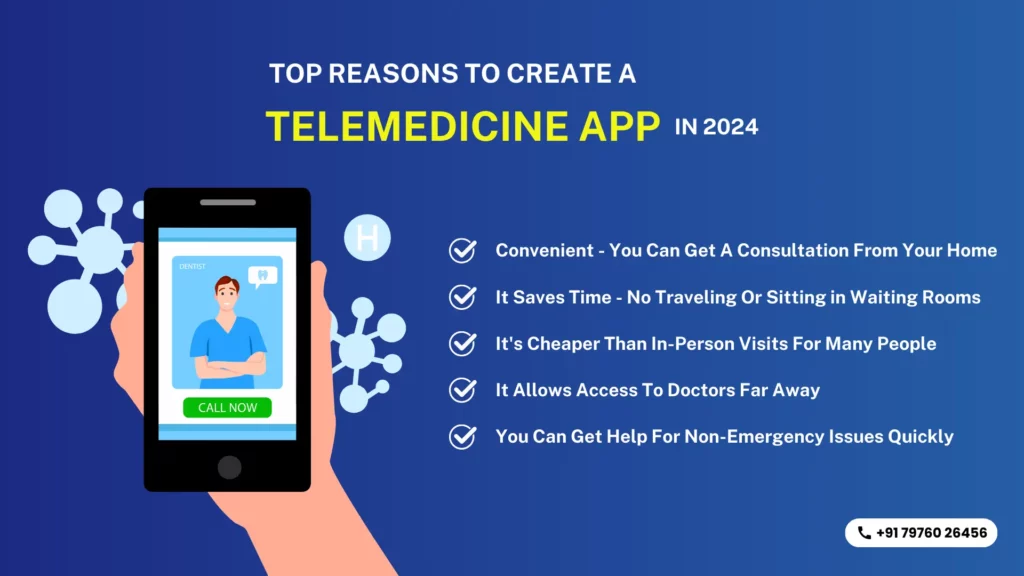
Telemedicine apps are growing in popularity. Technology is used to facilitate access to treatment. A telemedicine app in 2024 will help patients and doctors in a variety of ways.
Convenient – You Can Get A Consultation From Your Home
Instead of going anywhere, you can get a doctor’s consultation from a telemedicine app. Video calling allows you to consult with a doctor from the comfort of your own home. If you feel too sick to go outside, this is the best option for you.
It Saves Time – No Traveling Or Sitting in Waiting Rooms
This saves your time by not having to go to the hospital and wait for your appointment. You can save a ton of time by having the doctor contact you immediately through the app.
It’s Cheaper Than In-Person Visits For Many People
A telemedicine app session is generally less expensive for patients than an in-hospital consultation. By interviewing online, you can reduce the cost of other fees and travel expenses.
It Allows Access To Doctors Far Away
Using the app, you can quickly contact doctors around the world. They can also gain expertise from professionals in different cities.
You Can Get Help For Non-Emergency Issues Quickly
Instead of waiting days to make an appointment, you can use the app to talk to your doctor immediately about minor illnesses, such as the common cold and infections.
6 Key Steps To Develop A Telemedicine Application
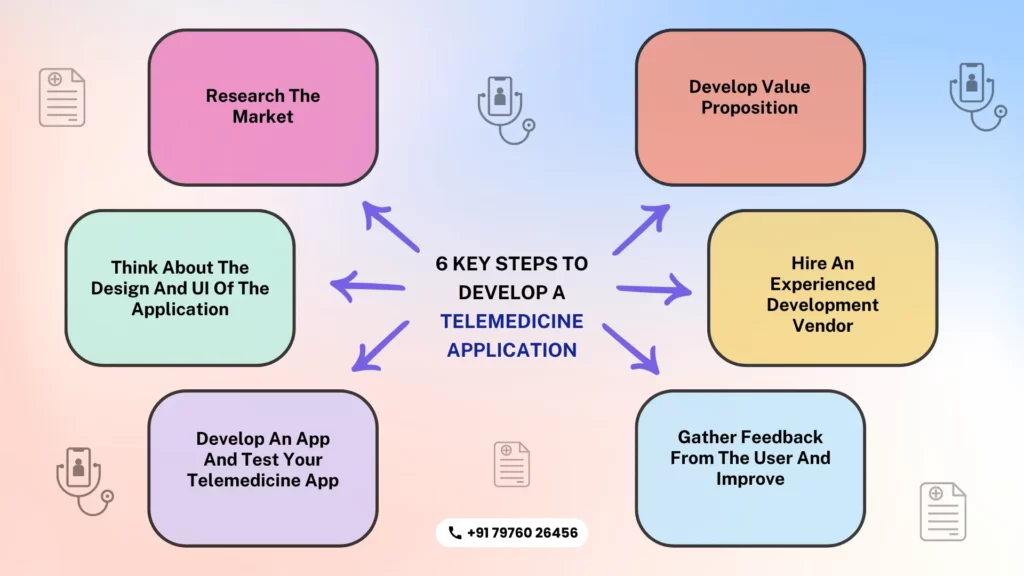
Successfully developing a telemedicine application requires careful preparation and execution. Here are six essential steps broken down into easy-to-understand steps to follow for developing a telemedicine.
Research The Market
Firstly, before a telemedicine app development you must research what other telemedicine applications are offering to the patients. Go through the features they offer and the prices they charge to understand the customer behavior thoroughly.
Develop Value Proposition
Then, consider what will make your app different from its competitors. Perhaps more doctor options, cheaper video calls, or simpler video calls. Highlight the main features of your app.
Think About The Design And UI Of The Application
The app should have a very simple and easy to use interface. Keep in mind that not every user is tech proficient. Keep the navigation simple and clear and use visuals.
Hire An Experienced Development Vendor
Check out a reputable, experienced app development service like DQOT Solutions. They promise that your app’s coding is clear and well-designed.

Develop An App And Test Your Telemedicine App
Once you are done with the planning procedure, start developing your application. Make sure to test your application on multiple devices to fix all the issues beforehand.
Gather Feedback From The User And Improve
Once launched, pay close attention to what users say about their experience. Use this to grow the app over time through updates.
Top Trends In Telemedicine Application Development
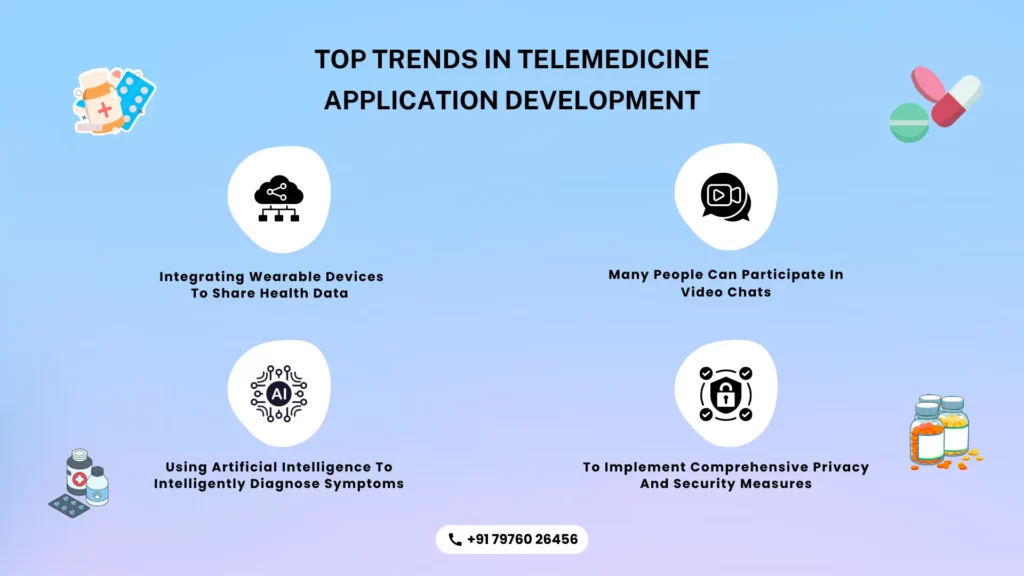
Mobile apps are constantly evolving to incorporate new technologies to improve patient care.
Integrating Wearable Devices To Share Health Data
Smart watches and wearable exercise trackers can be integrated with modern telemedicine applications. This allows the wearable device to automatically record data, such as your heart rate and steps taken on the app.
Using Artificial Intelligence To Intelligently Diagnose Symptoms
Today, many apps make creative use of artificial intelligence to monitor your symptoms. Based on the attributes you describe, the AI can offer some preliminary recommendations or guidance.
Many People Can Participate In Video Chats
The latest telemedicine applications allow you to include multiple participants in a single video chat. This allows you to add a viewer to a call or create a group chat.
To Implement Comprehensive Privacy And Security Measures
Modern apps use complex security features such as encryption to protect private medical information. Strict privacy laws assure that only authorized persons have access to your data.
How Much Does It Cost To Develop A Custom Telemedicine App?

Prices can vary from $20,000 to $80,000. The exact cost depends on several factors. First, it depends on how many features you want to add to your app. Apps with more features will cost more. Even more important if you need multiple apps or single iPhone and Android phones. Another thing to consider is the price of your app development work. There are more expensive manufacturers. Finally, you need to consider recurring costs after launching an app, such as paying for customer support services or software upgrades. It’s best to go with the app development team to your specific needs because there are so many moving parts.
Final Words
Mobile apps are growing in popularity because they facilitate healthcare. By following the important steps given above, you can create a user-friendly telemedicine application that makes it easy to access healthcare. An experienced app developer like DQOT Solutions can help you along the way. Just a call and your telemedicine app is developed!
Frequently Asked Questions For Telemedicine App
Research the market and competitors. Plan the features and design. Hire an experienced app development company. Build the app and test it thoroughly. Launch the app. Get user feedback and update the app regularly.
Use encryption to protect data. See HIPAA and other privacy laws. Prevent unauthorized individuals from accessing medical records. Make sure your login security is strong. Update application security frequently.
Important features include doctor video calls. Test results and pictures being uploaded. electronic prescribing. After you schedule an appointment. Medical history documentation. Remembering the remedy. Integration of wearable devices. Payment options. Assessment and rating of physicians.


